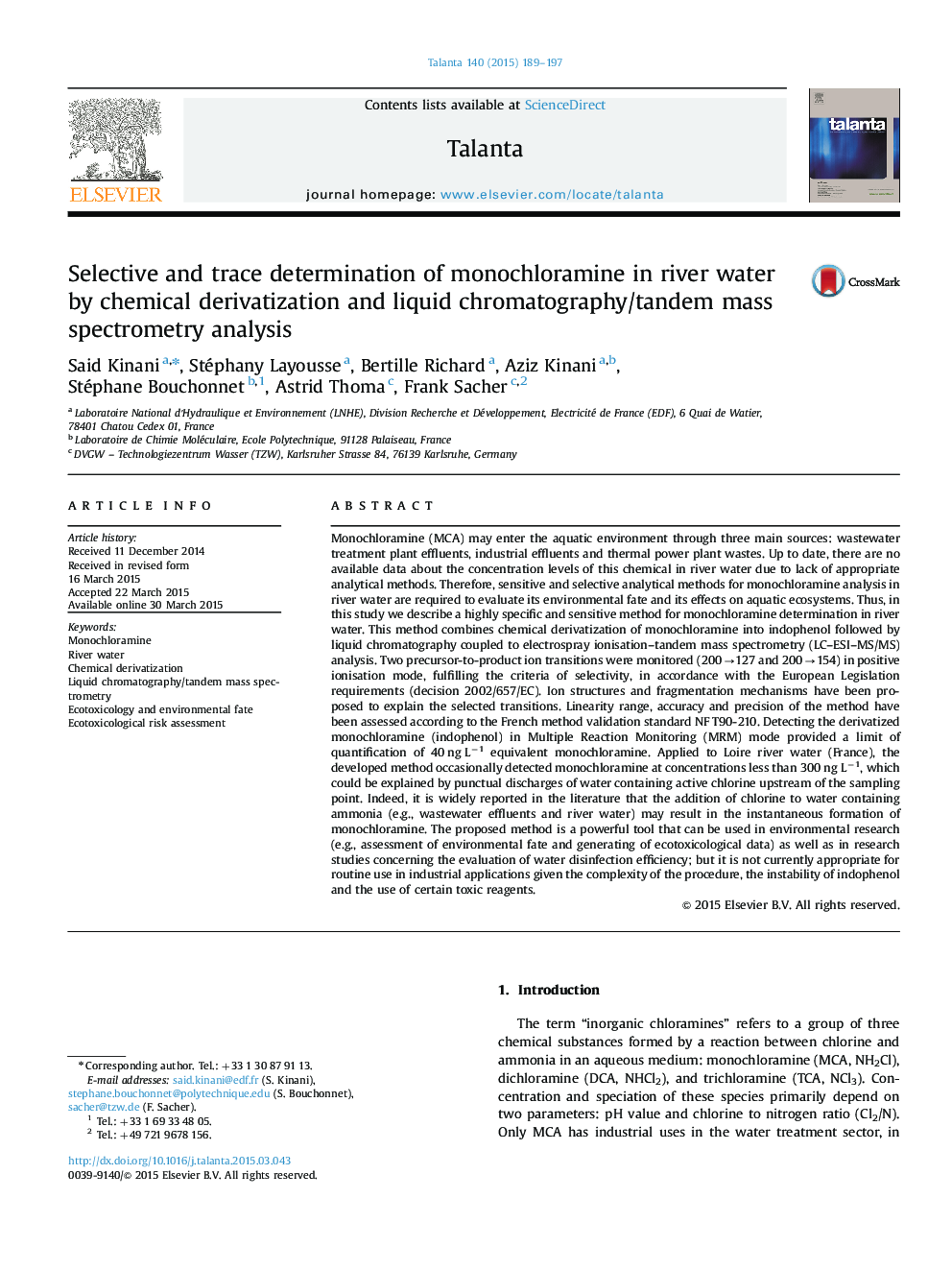| کد مقاله | کد نشریه | سال انتشار | مقاله انگلیسی | نسخه تمام متن |
|---|---|---|---|---|
| 1243075 | 1495795 | 2015 | 9 صفحه PDF | دانلود رایگان |
• A novel method for ultra-trace determination of MCA in river water is presented.
• The developed method is based on chemical derivatization and LC–MS/MS analysis.
• The obtained limit of quantification in MRM mode is 40 ng L−1 equivalent MCA.
• Concentration levels of MCA in river water were obtained for the first time.
Monochloramine (MCA) may enter the aquatic environment through three main sources: wastewater treatment plant effluents, industrial effluents and thermal power plant wastes. Up to date, there are no available data about the concentration levels of this chemical in river water due to lack of appropriate analytical methods. Therefore, sensitive and selective analytical methods for monochloramine analysis in river water are required to evaluate its environmental fate and its effects on aquatic ecosystems. Thus, in this study we describe a highly specific and sensitive method for monochloramine determination in river water. This method combines chemical derivatization of monochloramine into indophenol followed by liquid chromatography coupled to electrospray ionisation–tandem mass spectrometry (LC–ESI–MS/MS) analysis. Two precursor-to-product ion transitions were monitored (200→127 and 200→154) in positive ionisation mode, fulfilling the criteria of selectivity, in accordance with the European Legislation requirements (decision 2002/657/EC). Ion structures and fragmentation mechanisms have been proposed to explain the selected transitions. Linearity range, accuracy and precision of the method have been assessed according to the French method validation standard NF T90-210. Detecting the derivatized monochloramine (indophenol) in Multiple Reaction Monitoring (MRM) mode provided a limit of quantification of 40 ng L−1 equivalent monochloramine. Applied to Loire river water (France), the developed method occasionally detected monochloramine at concentrations less than 300 ng L−1, which could be explained by punctual discharges of water containing active chlorine upstream of the sampling point. Indeed, it is widely reported in the literature that the addition of chlorine to water containing ammonia (e.g., wastewater effluents and river water) may result in the instantaneous formation of monochloramine. The proposed method is a powerful tool that can be used in environmental research (e.g., assessment of environmental fate and generating of ecotoxicological data) as well as in research studies concerning the evaluation of water disinfection efficiency; but it is not currently appropriate for routine use in industrial applications given the complexity of the procedure, the instability of indophenol and the use of certain toxic reagents.
Figure optionsDownload as PowerPoint slide
Journal: Talanta - Volume 140, 1 August 2015, Pages 189–197
